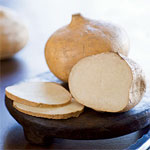Super foods are “so 2024.” There are just too many good-for-you foods out there to say that some (acai) are far better than others (blueberries). Nevertheless, Americans fall way below consuming the recommendations for vegetables and fruits and everyone could probably use a little “tune up” of their food choices. All veggies and fruits are good for ya, ’nuff said.
As you prepare for the new year, why not commit to changing it up. Here’s a list of five foods you should be eating if you aren’t already and a few ideas for enjoying them:
Why: Salmon is on my list because it is high in vitamin-D, omega-3 healthy fats, and is an excellent source of protein, which the body needs for muscle building and satiety, the full feeling. Salmon has more protein per ounce than hot dogs. So consider that next time you think it is too expensive.
How: Try salmon cakes with your healthy crab cake recipe. Canned salmon is inexpensive and doesn’t have a strong, fishy taste which keeps most people from trying it.
Why: I love all nuts, but if you generally don’t gravitate toward them, maybe you should. A one-fourth cup has a measly 163 calories and 95% of your daily omega-3 needs. Research shows omega-3 fats are anti-inflammatory, heart healthy disease fighters. Studies show walnuts may help increase HDL (good cholesterol) and decrease triglycerides, prevent cancers (thanks to vitamin E antioxidant), and decrease insulin resistance in diabetics. Can your 100-calorie pack do that? I think not!
How: Toast raw walnuts and use a small handful to top oatmeal, salads, and yogurts throughout the day or make a healthy trail mix with toasted oats cereal, walnuts, and dried cranberries.
Why: All veggies are great, but I am surprised by the number of people who have never tried jicama (pronounced HEE-kah-mah). Called the “Mexican potato,” this veggie (OK, so it is really a tuber) has a slightly sweet, slightly starchy taste. The texture is similar to an apple or pear. Once you get through the outer “paper-like” layer, there’s loads of goodness inside. One cup has less than 50 calories, 40% vitamin C, and 25% your daily needs of fiber!
How: I love jicama and dip! This honestly is a delicious sub for chips and dip. How does this sound for guilt-free T.V. snacking? Slice a cup of jicama and dip in 1/4 cup of healthy french onion or ranch dip? See recipe in number five.
Why: Carbs are good…mmmkayyy? You might mistake quinoa for a grain, but it is actually a seed. We all know about brown rice and that’s great. But if you want to avoid food fatigue, you must try quinoa. The seed is rich in protein and has a fluffy, creamy, slightly crunchy texture and a somewhat nutty flavor when cooked, which takes only minutes. One whole cup (that’s a lot) has only 222 calories, 39 grams of healthy carbohydrates, and 8 grams of protein.
How: You can eat it sweet like an oatmeal with nuts and dried fruit or savory with just about anything. I like adding chicken, feta cheese, roasted red pepper, and olives.
Why: Everyone knows about yogurt, but many have yet to try Greek yogurt. This kind is thicker and tangier than traditional plain yogurt. I like it for it’s texture and versatility. For only 120 calories, you can have a cup of fat-free Greek yogurt. You’ll also get 20% your daily needs of calcium (for strong bones) and a whopping 22 grams of protein.
How: Oh, let me count the ways. As a dip: mix with a french onion, ranch, or taco seasoning packet for a yummy, high protein dip. Use as a base instead of mayo for chicken, tuna, or egg salads. Replace oil in pancake recipes. Mix with plain yogurt and thawed frozen berries for a yummy breakfast or dessert.





